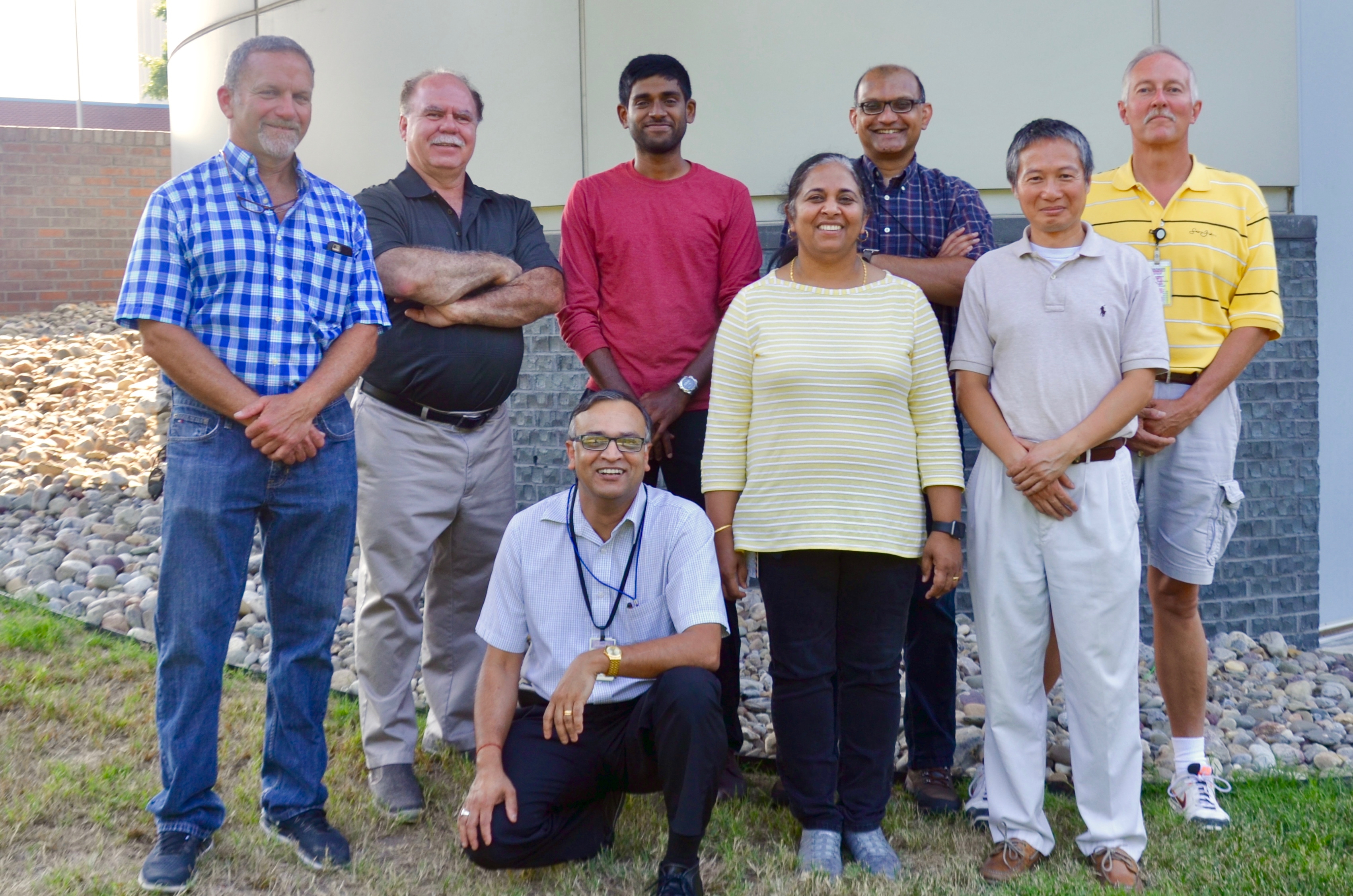Imagine this: After months of installation, your equipment is on the floor and ready to go. The electron beam is on. You’re finally about to collect data, when suddenly the superconducting magnet in your detector stops working. Normally, when the electron beam hits your target it creates a spray of particles that the superconducting magnet steers into your detector. But today, the magnet is shutting off instead of steering anything, and the on-call engineer can’t figure out why. Who do you call?
The Magnet Group, of course!
The Magnet Group is a newly formed technical support group in the Experimental Nuclear Physics Division at the Department of Energy’s Jefferson Lab. Its members are like doctors for magnets: If a magnet is sick, they make it better. They can provide support to all of Jefferson Lab’s existing and future magnets, both superconducting and resistive.
The group’s origin story begins in 2013, when Jefferson Lab sought superconducting magnet engineers for the 12 GeV Upgrade. Senior management considered forming a magnet group back then, but ultimately decided not to, so that the engineers could concentrate on the new and refurbished magnets needed for the upgrade.
“Working on the 12 GeV Upgrade, we were spread out pretty much all over Jefferson Lab’s four halls,” says Ruben Fair, an electrical engineer. “We gathered a lot of experience, and we really didn’t want that information and expertise to disappear.”
When the upgrade was completed in 2017, Fair sought the creation of an official group of magnet masters, so that their expertise could be consolidated for the benefit of the whole lab. The group’s official birth date was Dec. 1, 2017, and Fair was appointed its leader.
Of the group’s eight members, two are designers, two are electrical engineers, one is a physicist and three are mechanical engineers with more than 200 years of accumulated experience between them from a wide variety of fields. The engineers work together with their designers and other groups at the laboratory to carry out calculations and to create and translate designs into reality.
The Magnet Group’s main function is to provide round-the-clock, magnet-related support to the physicists running experiments, for example when the lab’s electron beam was on recently. If the hall engineer on-call couldn’t resolve a magnet issue, a member of the group would come in to figure out what was wrong and to determine what could be done to allow the physicists to continue with their work.
“You couldn’t carry out the groundbreaking research done here without these magnets,” Fair says.
While superconducting magnets steer particles into the detectors, resistive magnets in the accelerator steer the electron beam itself. Both play critical roles in nuclear physics experiments.
Fair says that most magnets at Jefferson Lab are well designed, so they don’t have many issues. One of the issues that can arise with magnets is quenching, where the magnet suddenly switches from zero resistance to a resistive state and rapidly heats up, which causes the control system to run the magnet down to prevent it from overheating.
Another issue that would require a magnet master’s help involves control systems. Fair says that lately, the Magnet Group has been investigating some issues with what they believe are the electronics that monitor and control the magnets. These electronics run down the magnet to protect it, but the group thinks these monitoring systems might be too sensitive, flipping a magnet off because of over-sensitivity and not because there is a real problem. They plan to investigate this mystery further this summer.
In addition to troubleshooting existing magnets, the group also helps make new ones. Magnet Group members are currently working with physicists to design magnets for a proposed electron-ion collider as well as to prepare magnets for other upcoming projects in the halls. In addition, members of the Magnet Group participate in Department of Energy review panels for other national labs’ magnet designs, as well as evaluate proposals from national labs, universities and small companies. Others in the magnet field also contact them for advice.
However, Fair says the Magnet Group’s other main priority is assisting work groups at Jefferson Lab with the design and maintenance of magnets here. Members of the group can be reached via contact information displayed on the group’s website: https://www.jlab.org/physics/magnet-group/magnethome.
Contact: Kandice Carter, 757-269-7263, kcarter@jlab.org.
By Chris Patrick


